Related Research Articles
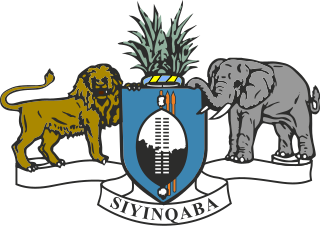
Eswatini is an absolute monarchy with constitutional provisions and Swazi law and Custom. The head of state is the king or Ngwenyama, currently King Mswati III, who ascended to the throne in 1986 after the death of his father King Sobhuza II in 1982 and a period of regency. According to the constitution of Eswatini, the king and Ingwenyama is a symbol of unity and the eternity of the Swazi nation. By tradition, the king reigns along with his mother or a ritual substitute, the Ndlovukati. The former was viewed as the administrative head of state and the latter as a spiritual and national head of state, with real power counterbalancing that of the king, but during the long reign of Sobhuza II the role of the Ndlovukati became more symbolic. The king appoints the prime minister from the legislature and also appoints a minority of legislators to both chambers of Libandla (parliament), with help from an advisory council. The king is allowed by the constitution to appoint some members to parliament for special interests. These special interests are citizens who might have been left out by the electorate during the course of elections or did not enter as candidates. This is done to balance views in parliament. Special interests could be people of gender, race, disability, business community, civic society, scholars, chiefs and so on. The Senate consists of 30 members, of which some are appointed by the king on recommendation of the advisory council and others elected by the lower house. The House of Assembly has 65 seats, of which 55 are occupied by elected representatives from the 55 constituencies around the country, and 10 are appointed by the king on recommendation of the advisory council. The attorney general is the ex-officio member. Elections are held every five years.

Artifacts indicating human activity dating back to the early Stone Age have been found in the Kingdom of Eswatini. The earliest known inhabitants of the region were Khoisan hunter-gatherers. Later, the population became predominantly Nguni during and after the great Bantu migrations. People speaking languages ancestral to the current Sotho and Nguni languages began settling no later than the 11th century. The country now derives its name from a later king named Mswati II. Mswati II was the greatest of the fighting kings of Eswatini, and he greatly extended the area of the country to twice its current size. The people of Eswatini largely belong to a number of clans that can be categorized as Emakhandzambili, Bemdzabu, and Emafikamuva, depending on when and how they settled in Eswatini.
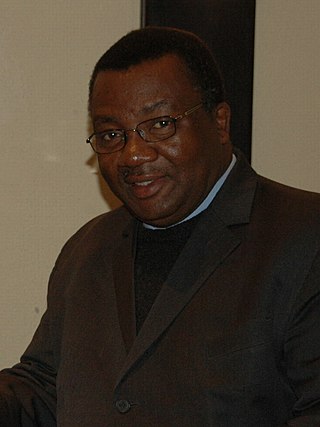
Absalom Themba Dlamini was the Prime Minister of Eswatini from November 2003 to September 2008. He is the managing director of Tibiyo Taka Ngwane.

Ndlovukati is the siSwati title for the female monarch of Eswatini. The title is given preferentially to the mother of the reigning king, or to another female royal of high status if the king's mother has died. The title is roughly equivalent to a queen mother, though she is jointly head of state, ruling alongside the Ngwenyama. The title can also mean doctor. When there is no king, the Ndlovukati rules as queen regent. The current Ndlovukati is Queen Ntfombi Tfwala, the mother of Ngwenyama Mswati III and wife of Sobhuza II. She was also queen regent from 1983 until 1986 when Mswati became king. The most notable queen regent was Ndlovukati Labotsibeni Mdluli who ruled Swaziland from 1899 until 1921 when she abdicated for Sobhuza II.
Sobhuza I (1788–1850) was king of Eswatini, from 1815 to 1850. Born around the year 1788, his father was King Ndvungunye, and his mother was Somnjalose Simelane. He was called Somhlolo, meaning "Mysterious man", upon his birth because his father, Ndvungunye, was struck by lightning. When Sobhuza was king, Lojiba Simelane, instead of his mother, Somnjalose was Queen Mother because Somnjalose was an inhlanti or support bride to Lojiba. Somhlolo is a greatly revered king of Eswatini. He had his first royal capital or kraal at Zombodze in the Shiselweni region, but moved it north to new Zombodze in central Eswatini. Swazis celebrate Somhlolo Day every September 6 as their Independence Day and the national stadium is named Somhlolo stadium. Sobhuza was succeeded by his son Mswati II and his wife Tsandzile Ndwandwe as Queen Mother after a short regency by Queen Lojiba Simelane. Sobhuza by the time of his death had conquered a country claimed to reach to modern day Barberton in the north, Carolina in the west, Pongola River in the south and Lubombo Mountains in the east.

The status of political parties in Eswatini is not clearly defined.
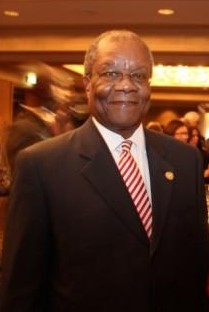
Prince Barnabas Sibusiso Dlamini was a Swazi politician who served as Prime Minister of Eswatini, from 1996 to 2003 and again from October 2008 to September 2018.
Mbandzeni was the King of Swaziland from 1872 until 1889. Ingwenyama Mbandzeni was the son of Mswati II and Nandzi Nkambule. His mother the wife of King Mswati had died when he was still very young. Mbandzeni ascended to the throne after his half brother Ludvonga II died before he could become the king. Ludvonga's death resulted in his mother Inkhosikati Lamgangeni adopting Mbandzeni who was motherless as her son, thus making him king and her the queen mother of Swaziland. His royal capital was at Mbekelweni. During his kingship Mbandzeni granted many mining, farming, trading and administrative concessions to white settlers from Britain and the Transvaal. The Boers had tricked the king into signing permanent land concesions. The king could not read or write, so the Boers made him sign the concessions with a cross. The king was told that these were not permanent land concessions but the papers themselves stated otherwise. These concessions granted with the help of Offy Sherpstone eventually led to the conventions of 1884 and 1894, which reduced the overall borders of Swaziland and later made Swaziland a protectorate of the South African Republic. During a period of concessions preceded by famine around 1877 some of the tindvunas (governors) from within Swaziland like Mshiza Maseko and Ntengu kaGama Mbokane were given permission by King Mbandzeni to relocate to farms towards the Komati River and Lubombo regions, Mshiza Maseko later settled in a place called eLuvalweni towards Nkomati River, where he was later buried. Mbandzeni, still in command of a large Swazi army of more than 15,000 men aided the British in defeating Sekhukhune in 1879 and preventing Zulu incursion into the Transvaal during the same year. As a result, he guaranteed his country's independence and international recognition despite the Scramble for Africa which was taking place at the time. Mbandzeni died after an illness in 1889 and is quoted to have said in his deathbed "the Swazi kingship dies with me". He was buried at the royal cemetery at Mbilaneni alongside his father and grandfather Sobhuza I. Mbandzeni was succeeded by his young son Mahlokohla and his wife Queen Labotsibeni Mdluli after a 5 year regency of Queen Tibati Nkambule. Today a number of buildings and roads in Swaziland are named after Mbandzeni. Among these the Mbandzeni house in Mbabane and the Mbandzeni Highway to Siteki are named after him.

The House of Dlamini is the royal house of the Kingdom of Eswatini. Mswati III, as king and Ngwenyama of Eswatini, is the current head of the house of Dlamini. Swazi kings up to the present day are referred to as Ingwenyama and they rule together with the Queen Mother who is called Indlovukati. The Swazi kings, like other Nguni nations, practice polygamy and thus have many wives and children.
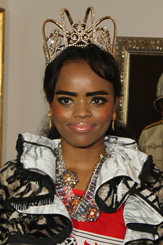
Princess Sikhanyiso Dlamini is a Swazi princess and politician. She is the eldest daughter of King Mswati III of Eswatini, and is the country's current Minister of Information and Communication Technology.

In Eswatini, no king can appoint his successor. Instead, an independent special traditional Council called the Liqoqo decides which of the wives shall be "Great Wife" and "Indlovukazi". The son of this "Great Wife" will automatically become the next king.
Prince Sozisa Dlamini of Swaziland was Chief of Gundvwini. He became the Authorized Person of Swaziland from 1982 to 1985 after the death of King Sobhuza II, and in 1983 was briefly the acting Regent of the country, after he deposed Queen Dzeliwe. From 1983 he was Authorized Person to the new Queen Regent, Ntfombi, with greater powers. Although lacking the title, he was for most purposes the de facto ruler of the country. He fell from power in July 1984, after being accused of planning a coup, and was suspended as Authorized Person until Queen Ntfombi terminated his appointment on 1 November 1985.
Dlamini is an African clan and surname, common in South Africa and Eswatini. It is the most common surname in South Africa. Most people whose surname is Dlamini are also members of the Dlamini clan.

Themba Nhlanganiso Masuku is a Swazi politician who has served as Deputy Prime Minister of Eswatini since 2018 and as Acting Prime Minister from 13 December 2020 to 16 July 2021. Earlier, he served as Deputy Prime Minister from 2008 until 2013.
Tibati Madvolomafisha Nkambule, was the Queen Regent and Indlovukati of Swaziland from 1889 until 1894 following the death of King Mbandzeni.
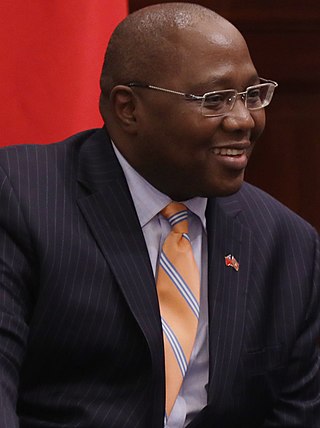
Ambrose Mandvulo Dlamini was a Swazi business executive who served as the tenth prime minister of Eswatini, holding the office from October 2018 until his death on 13 December 2020.
Shiyiwe Mantfombi Dlamini Zulu was the queen consort of the Zulu nation from 1977 to 2021 as the Great Wife to King Goodwill Zwelithini. She served as the queen regent from March 2021 to April 2021.

The Sive Siyinqaba National Movement is a political party in Eswatini. It is led Ngomuyayona Gamedze as of 5 November 2022 as president, taking over from former Minister of Tourism Musa Nkambule and calls for a constitutional monarchy as a replacement for the absolute monarchy currently in place in Eswatini. Sive Siyinqaba National Movement also calls for a government by the people, for the people.
References
- 1 2 3 4 5 Siyinqaba (1984). "The Swazi Monarchy" (PDF). Africa Insight. 14 (1): 14–16.
- ↑ Gillis, D. Hugh (1999). The Kingdom of Swaziland: Studies in Political History. Greenwood Publishing Group. pp. 25, 26, 66. ISBN 9780313306709.